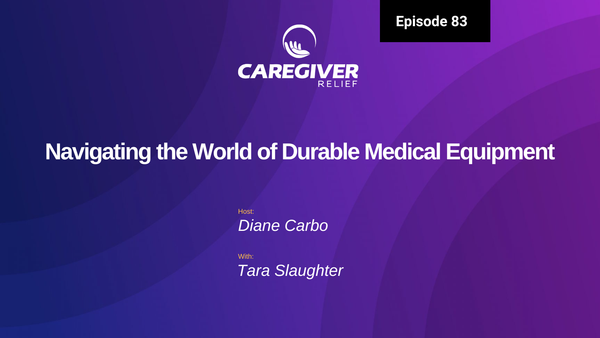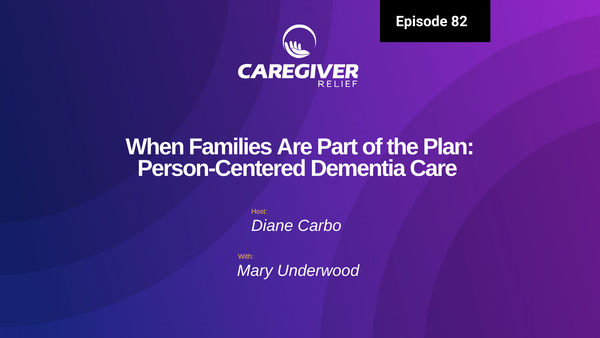Who Should Make End-of-Life Decisions?

Making end-of-life decisions can be difficult and emotional. For this reason, it’s important to be informed about how these decisions are made and who is responsible for them. In this guide, we will cover the topics surrounding end-of-life decisions and answer the question of “who should make end-of-life decisions?”.
We will explore the legal definition of end-of-life in order to more accurately define this sensitive phrase. We will also discuss the physical and mental symptoms often associated with deteriorating health and what medical assessments are conducted in order to determine whether a decision needs to be made. We will look at who is typically found to have the capacity to make these decisions as well as those responsible if the person is unable to do so.
Additionally, explore the concept of Advance Health Care Directives and how they play into the making of end-of-life decisions. We will discuss the state and federal laws that surround end-of-life decisions and how they protect everyone involved. We will analyze and address common issues with the different perspectives and ethical concerns that come with making end-of-life decisions. And finally, provide readers with advice on how to successfully navigate through the process of making end-of-life decisions.
We will utilize reliable resources to ensure accurate and up-to-date information is provided as we examine the topic of “who should make end-of-life decisions?”. After reading this guide, you will gain a greater understanding of the complexity of end-of-life decisions and why it’s important to be informed about who should make them.
Exploring the Definition of End-of-Life
Making end-of-life decisions can be a difficult and emotional time for all involved. Understanding the legal definition of “end-of-life” is an important first step in knowing when these decisions must be made.
The term “end-of-life” generally refers to the time period in which a person with a medical condition has deteriorated to the point that aggressive or life-prolonging treatments are no longer beneficial, and death is anticipated. In legal terms, this is the time period when a person is determined to have a terminal condition that cannot be cured or that has progressed to the point of being incurable and life-threatening.
While a person’s health may be deteriorating and signs and symptoms may indicate they are approaching end-of-life, it is important to understand that these symptoms are not always an accurate indicator of when end-of-life will occur. It is often only after medical testing that a doctor or healthcare provider can determine the person’s capacity to make decisions, the prognosis, and whether or not end-of-life has been reached.
Deciding who should make end-of-life decisions is a complex process that requires a thorough understanding of the legal definition of “end-of-life” and how it applies to the individual case. With the right information, those involved can make informed decisions about the best course of action.
Symptoms & Determining Impairment
When making end-of-life decisions, it is important to be aware of the physical and mental symptoms associated with deteriorating health. In order to accurately assess if an individual is no longer able to make their own decisions, medical assessments are necessary.
At the end of life, individuals may begin to experience confusion, disorientation, agitation, forgetfulness, a decline in physical health, and general fatigue. As the illness progresses, the person may become non-verbal, show evidence of pain, or display other signs of distress. Without proper assessment, it can be difficult to determine impairment and make informed decisions.
When evaluating capacity, medical professionals use a variety of tools to assess cognitive and physical functioning. This may include evaluations of memory, problem solving, language, judgment, and decision making skills. It is important to take into account the individual’s age, culture, education, and past behavior when assessing capacity.
Overall, it is important to consider the physical and mental symptoms of the patient in order to help them make the best possible decision. Medical professionals can provide the necessary information to do so, which is why an assessment is so important when making end-of-life decisions.
Capacity & Decision Makers
When it comes to end-of-life decisions, the primary responsibility lies with the affected person. They are the one who must decide what will be done with their medical treatment, care, and other matters. Of course, in some cases, a person may not be able to make these decisions themselves due to impairment or incapacity. In such instances, the responsibility of decision-making needs to be assigned to someone else.
In order for someone to have the capacity to make end-of-life decisions, they must have an understanding of the facts and ramifications of their choices. This means that in most cases, the individual should understand the medical condition they are facing and its potential outcomes, and they must be of sound mind to make the best possible decision.
If a person does not have the capacity to make their own decisions, then the responsibility for making decisions typically falls on family members, guardians, or close friends. It is important to remember that the best interests of the person involved should be in the forefront of all decisions made.
There is also the possibility that a person has already appointed a proxy decision maker in the form of an advance health care directive. This directive would specify who should carry out medical treatment and other care decisions on the person’s behalf when they are no longer able to do so.
Advance Health Care Directives
An advance health care directive (AHCD) is a legal document that allows individuals to specify their future health care wishes. It is designed to give people control over their health care decisions, even when they may be unable to communicate those decisions themselves. AHCDs are incredibly important when it comes to making end-of-life decisions, as they help to ensure that the person’s wishes are upheld and respected.
AHCDs are prepared in advance with an attorney, and can be changed or revoked at any time. They are commonly used for determining how a person wants to be cared for and what treatments they do or do not want to receive. The document typically names a healthcare proxy to make healthcare decisions in the event that the individual is unable to do so, and also provides information about funeral arrangements and other matters.
It is important to understand that AHCDs are only effective if they are correctly filled out, updated, and adhered to by all relevant parties. An experienced attorney can help individuals to create an AHCD that meets all of their needed criteria.
Legislation & Rights
Making end-of-life decisions can be difficult, and it’s important to understand the rules surrounding them. State and federal laws exist to protect everyone involved when making such decisions, so it’s important to stay informed about these laws.
Every state has different laws regarding end-of-life decisions, and in most states, the patient must give consent for any medical treatment or procedure. The law also typically requires that the patient has the capacity to make decisions, and if they do not have this capacity, the person who is granted authority by the court must agree to any decisions made.
Federal laws also play a role in protecting the rights of all those involved in end-of-life decisions. These laws ensure the patient’s right to choose what treatments and procedures they wish to receive, and that no one is forced to make any decision against their will. Additionally, the federal laws provide certain protections for those who are legally authorized to make decisions on the patient’s behalf.
Understanding the laws and regulations surrounding end-of-life decisions is an important part of the process, as it helps ensure that everyone involved is aware of their rights and responsibilities. By following the laws, everyone can be sure that their decisions are being made in accordance with the regulations set forth by federal and state authorities.
Exploring Different Perspectives
When it comes to end-of-life decisions, people can have vastly different perspectives and ethical concerns. It’s important to understand these varying viewpoints in order to make sure everyone involved is respected and all decisions are based on informed consent.
One of the primary considerations when making end-of-life decisions is the patient’s right to autonomy. This right provides individuals with the freedom to make decisions about their own health care wishes and treatment options without influence from others. It’s essential to make sure the patient’s wishes and preferences are taken into account whenever possible.
Another issue to consider is how cultural and religious beliefs intersect with end-of-life decisions. Depending on a person’s background, certain medical treatments may be more or less acceptable. It’s important to take cultural and religious beliefs into consideration, while still upholding a person’s autonomy.
It’s also important to consider the perspectives of other stakeholders such as family members, caregivers, healthcare professionals, and legal representatives. These people may have unique insights and perspectives that could help inform end-of-life decisions. It’s essential to gather input from all stakeholders to ensure that the best decisions are made.
Finally, it’s important to recognize the emotional impact end-of-life decisions can have on everyone involved. It’s crucial to ensure that everyone feels respected and supported during this difficult time.
When it comes to making end-of-life decisions, it’s important to consider the various perspectives involved, respect the autonomy of the patient, and honor the emotional needs of those involved. Taking these steps will help ensure that the best decision is made for everyone.
Making end-of-life decisions is a difficult and deeply personal process. As life transitions, it’s important to consider the various perspectives of those involved. While making informed decisions can be emotionally and physically draining, there are steps you can take to better navigate this situation.
When it comes to decision making, having a team of professionals to guide you through the process can be immensely helpful. Doctors, legal professionals, and mental health professionals can provide valuable insight and advice that will help you make the best decisions. These professionals can also provide emotional support during this tough time. Additionally, you may want to seek out faith-based resources or organizations that serve as support systems for families going through end-of-life decisions.
It’s also important to remember that even though the need for end-of-life decisions is immediate, it’s not always possible or even necessary to make these decisions in haste. Give yourself the time and space to make informed decisions. This could mean taking a break from the situation or seeking guidance from professionals.
The most important thing to keep in mind is that regardless of the decisions made, it’s important to ensure that the rights of everyone involved are respected. When making end-of-life decisions, empathy and understanding should be at the forefront. Allow for different opinions to be heard and respected, no matter how difficult the decisions may be.
Above all else, remember to take care of yourself and those around you. The emotional toll of making end-of-life decisions can be enormous, and it’s important to be prepared for the responses and emotions that may arise. Make sure to practice self-care and check-in with friends and family who can offer support throughout the process.
It’s important to understand the legal implications of end-of-life decisions and their role in our lives. To gain a better understanding of this serious topic, it’s helpful to access reliable resources like books, websites, and organizations that specialize in end-of-life decisions. Consider making the following resources part of your research:
- Books: “Who Will Speak for America? The Role of Families in End-of-Life Decision Making” by Professor Ellen P. Goodman
- Websites: National Hospice & Palliative Care Organization (nhpco.org) or Medical Orders for Life-Sustaining Treatment (molst.org)
- Organizations: Advisors in End of Life Care (advisorseolc.org) or Community Catalyst (communitycatalyst.org)
While these resources can provide essential information for understanding the weighty matter of who should make end-of-life decisions, it is also important to discuss these decisions with those who may be affected. Consider reaching out to health care providers, experts, family members, and other individuals who have an interest in the outcome. Through these conversations, we can become better informed about how these decisions will affect us and our loved ones.
Ending one’s life with dignity is a right and a responsibility, and making the right decisions at the end of someone’s life is an important task. Knowing who should make end-of-life decisions is a critical part of this process, as it ensures that everyone involved is respected and treated fairly. The key to making the best decisions for everyone involved is understanding the legal and ethical implications, as well as the physical and mental symptoms associated with deteriorating health. Understanding advance health care directives and state and federal laws will enable you to make informed decisions about someone’s end-of-life care. By being aware of all of these factors, you can ensure that the end-of-life decisions made are in the best interest of both the patient and their family.
You might also like this article:







